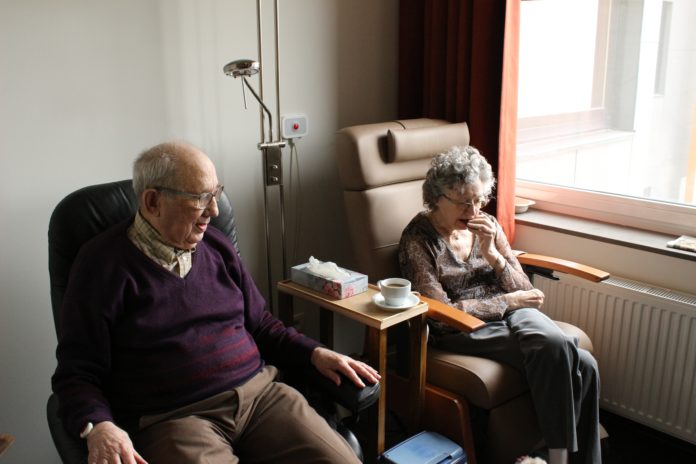Senior Care Communities Were in the News Early On.
For a short period in February 2020, the epicenter of the novel (new) corona virus disease 2019 (COVID-19) nationally. Since the first resident tested positive for the virus on February 19, it saw a disproportionate number of its residents affected by corona virus.
Understandably, the tragic deaths at Life Care Center and more recently, the deaths in Florida. At Atria Willow Wood which the governor characterized as “criminal negligence,” have given many Americans pause. At the thought of placing or keeping their loved one at a senior care facility during the COVID-19 emergency. As of today, close to 150 skilled nursing facilities in 27 states have at least one resident with COVID-19 according to the Centers for Medicare & Medicaid Services (CMS).
Is it Safe to Stay at or Move into a Senior Community During the Pandemic?
Most often, the decision to move into a skilled nursing or assisted living facility is driven by health issues or isolation issues that just won’t wait, virus pandemic or not.
The majority ofcommunities had the time and the resources to react and isolate themselves appropriately. Your job as a responsible person seeking care for yourself or your loved.
If you were considering moving yourself or a loved one into a senior care facility. You don’t necessarily have to put those plans on hold. However, you owe it to yourself to take all the extra time you need to research their operations. And find out what they are really doing to prepare.
Nursing homes vs. assisted living?
It’s worth understanding the terminology here.
There are also continuing care retirement communities (CCRC) which provide a full continuum of care, starting with independent living in an apartment or stand-alone cottage.
Sometimes a single location will contain both assisted living residents as well as skilled nursing residents.
Lessons Learned from Affected Senior Communities.
Suffering extensive outbreaks, and also some fact-based analysis and also reporting has been possible. Investigators have found that several factors contributed:
- Early epicenters suffered the worst. In early February the scope and also urgency of the outbreak wasn’t clear to most people.
- PPE was not used initially. Reports indicate that Life Care in Washington allowed family visitors into the facility unchecked, and also staff treated at risk residents without personal protective equipment (PPE) well into the outbreak, even while saying publicly they were complying with government guidelines. (https://www.seattletimes.com/seattle-news/first-days-at-the-heart-of-an-outbreak-life-care-nursing-home-becomes-national-epicenter-of-coronavirus/)
- Existing state and federal guidelines were ignored. Federal regulators found that Life Care Center failed to rapidly identify and manage sick residents; failed to notify the Washington Department of Health about the increasing rate of respiratory infections among residents; and also failed to have a backup plan in the absence of Life Care’s primary clinician, who fell ill.
- Poor staff training in infection prevention. Staffers in some care facilities were poorly trained in proper procedures for preventing the spread of had instituted corrective measures and were recertified in June. Nationally, failure to implement proper infection hygiene is one of the most common health department citations in the senior care industry.
- Lack of testing for COVID-19. The lack of test kits made it difficult to know what was actually happening, but administrators also did not react strongly enough to isolate their affected populations.
- Ignoring the problem. The case of Atria Willow Wood, investigations showed that they failed to screen staff, cooks, or construction workers.
“In most of the big cities, facilities did plan for backup. The challenge for this is that it’s going to be ongoing—not what anyone had supplies. For and it’s evolving day by day,” says Lisa Mayfield, a certified care manager. And also past president of the Aging Life Care Association board.
How Are Senior Health Care Communities, Managing the Outbreak?
We spoke to Elizabeth P. Andersen, corporate director of compliance and also risk management at United Methodist Communities (UMC). A non-profit senior living and also care organization, operating nine senior living locations and a home care agency across New Jersey.For the virus in any of their four assisted living/skilled nursing communities nor any of their 5 affordable senior housing communities across the state as of April 7, 2020.
Visitation To Our Communities
“As soon as we saw what was happening in Washington, we began limiting visitation to our communities,” says Ms. Andersen who directed efforts across the company to define and institute comprehensive COVID-19safety measures. “The severity of the steps we took escalated rapidly but by the time cases started to appear in our area. We had already instituted major restrictions on visitation. And screening of all residents and associates for symptoms, as well as obtaining face cover masks and other PPE equipment.”
Some of UMC’s safety measure include:
- Severely limiting entry into communities yet providing creative ways for residents to be in visual contact with their loved ones.
- All associates are monitored daily upon entrance with an infrared thermometer.
- All residents have temperature taken twice per day with an infrared thermometer.
- Designated area’s set up for isolation and care should anyone become infected.
- Mandatory hand sanitizing through the day for aides and residents along with greatly increased disinfecting of the entire facility.
- No residents are allowed to leave their campuses except for medical emergency. Residents who choose to leave may not return until further notice.
- Social distancing in strict force, all common areas closed, all social gatherings and outings cancelled.
- Careful monitoring of supplies across the communities. Masks, gloves, and gownsare available and generous volunteers and residents who can sew are making masks.
- Maintenance of an adequate and committed staff sufficient to provide care in all facilities.
Despite these kinds of precautions, no health care professional would claim that they can fully protect the population of a senior community in the wake of a pandemic. Instead potential residents should consider not only their current case exposure. But their ability to quickly isolate and safely care for those who may become affected in the future.
Keeping Socialization Going During Social Isolation
While thorough safety protocols are a necessity, the isolation inherent in COVID-19 responses extracts a particularly heavy toll from seniors. Those with Alzheimer’s or Dementia for instance, often rely on regular visits from family to maintain their connection to memory. Feelings of loneliness can be strong in the absence of family or immediate social contact.
According to Elizabeth, UMC and many other senior communities are using technology to a greater degree than ever before to keep people connected:
- Aides help residents facilitate the hygienic use of computers, iPads and phones to connect with others using ZOOM, Skype, Facetime and other apps.
- Making videos and sending them to love ones.
- Encouraging and teaching seniors to use Facebook and other social media to stay in touch with family.
- Residents who sew can be put to work making masks.
- Hotlines and web-based information can be provided to residents and families. Through frequent communication over social media, email, text and phone calls, keeping families informed and calm.
family members
Stories abound about aides and staffers going to heroic lengths to help family members visit through windows or curbside visits from a safe distance.Decorate the windows of Nana’s apartment with loving messages, from the outside.
Conclusions
It would be fair to say that assisted living facilities across understand the extreme responsibility they have while the virus is active. Most are doing the right thing, and many are erring on the side of extreme caution.
Still, if you were considering moving yourself or a loved one into a senior care facility, you owe. It to yourself to take a time to research their operations and find out what they are really doing. Look at their public health inspection records to find out what their history of health violations looks like.
Mind that you are not looking for perfection here. You are looking for the frequency of their violations, the severity of violation. That’s a sign of bad management, poor staff training, or both.


















